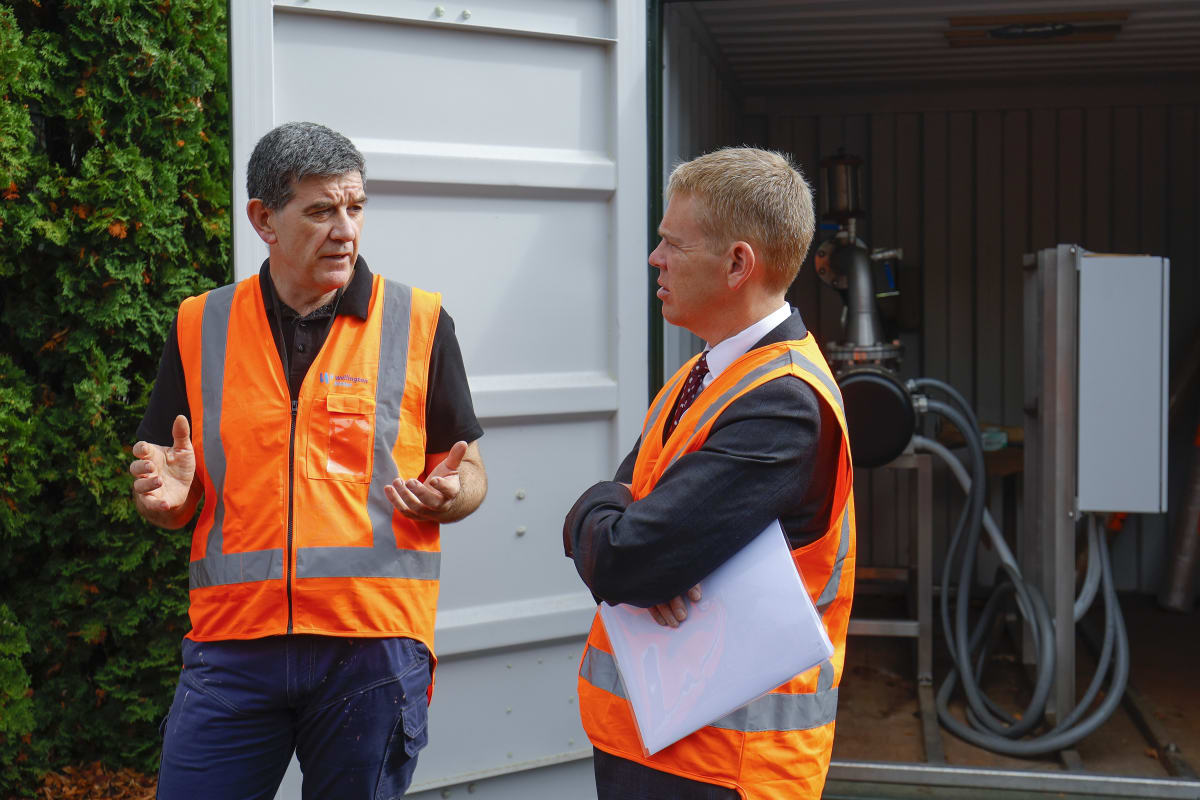
Another day, another Three Waters announcement. A generation on, NZ is dithering over fixes to rundown drinking water and wastewater plants and pipes – everybody wants control, nobody wants the bill. But one way or the other, writes Jonathan Milne, we'll all pay.
Opinion: In some ways, this is where it all started: the plan to build a new Mangawhai wastewater scheme in 1996, after septic tanks started polluting the northern community’s beautiful harbour.
Ratepayers were initially told a new sewerage scheme would cost $10.8m; that soared to $60m by 2013 and plunged Kaipara District Council deep into debt. Angry locals refused to pay their rates.
But as with today’s upgrades to drinking water and wastewater infrastructure throughout New Zealand, the new Mangawhai plant was desperately needed. In a scathing 2013 review, Auditor-General Lyn Provost said a reticulated wastewater scheme had been necessary, and had been delivered. “But that achievement has come at a significant cost.”
READ MORE: * Q&A: Who should pay for desperately needed Three Waters work? * Water infrastructure to be taken off councils and run by big regional authorities
Now, that Mangawhai wastewater plant is almost at capacity – and the council is preparing to build a newer, bigger extension. This $68m plan will be spread over more than two decades, the Kaipara council announced this week, and eventually boost the scheme's capacity to 5000 connections.
Mangawhai has come full circle and yet, New Zealand still hasn't worked out how to pay its water bills. Upgrades to our water infrastructure are needed more than ever. Nearly a quarter of wastewater plants were operating on expired resource consents last year; sewage spewed into the streets of Wellington and Porirua.
Many households aren't connected up to town water supplies. About 18 percent of New Zealanders (that's 927,000 people) don't have drinking water that's up to standard, according to the most recent report by new water quality regulator Taumata Arowai.
It reported that 296 of the 485 drinking water supplies previously monitored weren't up to scratch – among them were 42 where bacteria were detected that could cause immediate illness; 17 where chemicals were detected that could cause illness over time; and 80 supplies that were forced to issue notices telling people to boil or not use their water, because the water wasn’t safe to drink.

Under new laws, Taumata Arowai will monitor 2000 water supplies – and getting them up to standard won't be easy. The fatal Havelock North campylobacter outbreak underscored how small councils lack expertise and scale to manage complex water infrastructure. No disrespect intended.
Councils have also struggled to fund their Three Waters infrastructure; sometimes out of a short-sighted electoral populism that makes it more politically expedient to spend the money on highly visible community facilities like parks and civic centres; sometimes because they are genuinely cash-strapped.
Their rates take has fallen far behind population growth, and successive central governments have been reluctant to allow them new revenue tools like hotel taxes, or a share of locally-collected GST. This has contributed to rising costs for ratepayers, and not just those of Kaipara. For instance Watercare, which runs the drinking water and wastewater infrastructure in Auckland, is to hike its charges by 9.5 percent in July – its fourth successive above-inflation rises in a schedule that will nearly double charges for the city’s ratepayers over 10 years.
Yet the Government's plan to shift management of water infrastructure away from the councils, which paid to build the pipes, has been predictably unpopular at a local level. Back in 2020, Newsroom reported that infrastructure would be handed to about four big new government-owned water agencies, slashing city and district councils' balance sheets in half. "If they don't agree nicely, it's likely to be forced on them," we said. "If you don't know about the Three Waters reforms, it's time to sit up and listen."
Unfortunately the loss of local control, and some public scepticism about iwi co-governance in accordance with the Treaty, ended up combining with the Government's ham-fisted communications to create a political firestorm. Laying out his agenda to Parliament in February, the new Prime Minister Chris Hipkins insisted the Government would deliver safe drinking water.
Today, he changed that messaging.
He's signalled his new focus is on "affordable water infrastructure"; he's restored a greater degree of local influence with 10 regional water entities, rather than just four.
Ironically, based on previous cost projections, 10 corporations won't deliver the same cost savings to ratepayers as four – though it's still likely to be better than 67 councils.
Lyn Provost's words still echo. Good, 21st Century water infrastructure is needed – but it will come at a significant cost. Billions of dollars in financial costs are unavoidable; better engagement with local leaders might, however, have averted such an enormous cost to community cohesion.







